The Importance of Looking at Parasites, Viruses, Yeast and Fungal Infections
 In his book Why Can’t I Get Better: Solving the Mystery of Lyme and Chronic Disease, Dr. Richard Horowitz proposes what he calls the MSIDS model. It stands for Multiple Systemic Infections Disease Syndrome and takes a broad look at how many different factors can contribute to persistent illness. In the following excerpt, he discusses several of the factors that can complicate diagnosis and treatment of Lyme disease.
In his book Why Can’t I Get Better: Solving the Mystery of Lyme and Chronic Disease, Dr. Richard Horowitz proposes what he calls the MSIDS model. It stands for Multiple Systemic Infections Disease Syndrome and takes a broad look at how many different factors can contribute to persistent illness. In the following excerpt, he discusses several of the factors that can complicate diagnosis and treatment of Lyme disease.
Parasitic Infections
 Intestinal parasites like giardia, amoeba, pinworm, hookworm, schistosomiasis, and strongyloides are part of the MSIDS map. These infections are found on both serum antibody testing and stool cultures (i.e., local labs, Genova stool CDSA). Although we generally think of parasitic worms as only inhabiting the GI tract, Dr. Alan MacDonald recently found nematode filarial worms in the cerebrospinal fluid of patients with multiple sclerosis and Alzheimer’s disease at autopsy. Dr. Eva Sapi has found filarial worms in Ixodes scapularis ticks, and Zhang and colleagues found them in lone star ticks, so it is possible that filarial worms are being regurgitated from the gut of the tick into humans after a tick bite. Dr. Steven Fry has found parasites in the bloodstream living in biofilms, called Protomyxoa rheumatica (FL-1953), which are composed of up to eight different genetic types of parasites. Babesia suppresses our ability to clear other parasites, so are multiple parasites partially responsible for chronic illness in Lyme-MSIDS?
Intestinal parasites like giardia, amoeba, pinworm, hookworm, schistosomiasis, and strongyloides are part of the MSIDS map. These infections are found on both serum antibody testing and stool cultures (i.e., local labs, Genova stool CDSA). Although we generally think of parasitic worms as only inhabiting the GI tract, Dr. Alan MacDonald recently found nematode filarial worms in the cerebrospinal fluid of patients with multiple sclerosis and Alzheimer’s disease at autopsy. Dr. Eva Sapi has found filarial worms in Ixodes scapularis ticks, and Zhang and colleagues found them in lone star ticks, so it is possible that filarial worms are being regurgitated from the gut of the tick into humans after a tick bite. Dr. Steven Fry has found parasites in the bloodstream living in biofilms, called Protomyxoa rheumatica (FL-1953), which are composed of up to eight different genetic types of parasites. Babesia suppresses our ability to clear other parasites, so are multiple parasites partially responsible for chronic illness in Lyme-MSIDS?
Parasites apart from Babesia can play an important role in keeping chronic Lyme patients sick, and antiparasitic regimens are often important.
Regimens including Biltricide, ivermectin, pyrantel pamoate (Pin-X), paromomycin, Alinia, and Albenza have been effective in certain patients with not only persistent GI symptoms but also fatigue, headaches, and myalgias resistant to classical tick-borne therapy. Some Morgellons patients report noticing help using antiparasitic drugs in combination with regimens against Lyme and tick-borne co-infections (like Bartonella), and some neuropsychiatric Lyme patients have seen improvement in cognition and behavior with antiparasitic drugs. Make sure you do a comprehensive parasite evaluation if you or your patient is not getting better.
Viral Infections
 Vector-borne viral infections can affect those with Lyme-MSIDS. Some of these infections are transmitted by mosquitos, such as dengue fever, Japanese encephalitis, Eastern and Western equine encephalitis, West Nile virus, and the newer Chikungunya and Zika viruses. The Zika virus can also be transmitted by sexual contact. Others are transmitted by ticks, such as tick-borne encephalitis virus (TBEV), Omsk hemorrhagic fever, Kyasanur forest disease (KFD), Congo-Crimean hemorrhagic fever (CCHF), Powassan encephalitis, and the recently discovered Heartland and Bourbon viruses. Researchers have also isolated the Tacaribe virus, which can cause hemorrhagic disease, from 11.2 percent of Amblyomma americanum ticks in Florida. It is not known if the tick can transmit the virus to humans.
Vector-borne viral infections can affect those with Lyme-MSIDS. Some of these infections are transmitted by mosquitos, such as dengue fever, Japanese encephalitis, Eastern and Western equine encephalitis, West Nile virus, and the newer Chikungunya and Zika viruses. The Zika virus can also be transmitted by sexual contact. Others are transmitted by ticks, such as tick-borne encephalitis virus (TBEV), Omsk hemorrhagic fever, Kyasanur forest disease (KFD), Congo-Crimean hemorrhagic fever (CCHF), Powassan encephalitis, and the recently discovered Heartland and Bourbon viruses. Researchers have also isolated the Tacaribe virus, which can cause hemorrhagic disease, from 11.2 percent of Amblyomma americanum ticks in Florida. It is not known if the tick can transmit the virus to humans.
Chronic viral infections (non-tick-borne) may also explain some of the resistant symptomatology that we see among the Lyme-MSIDS population for whom antibiotic therapy fails.
Viruses do not respond to antibiotics, and some of these viruses can cause illness in patients with chronic fatigue syndrome and fibromyalgia. I often screen chronic MSIDS patients for associated viral infections, especially if they are presenting with significant fatigue, fibromyalgia, and neurological symptoms. These patients may be carrying viral infections without knowing it, and once they become infected with Lyme disease and other co-infections, it may cause a reactivation of prior viral infections and an exacerbation of their condition.
The most common viral infections that we screen for include:
- Epstein-Barr
- Human herpes virus 6 (HHV-6)
- Cytomegalovirus (CMV)
- West Nile
We often find elevated levels of HHV-6, which are linked to both chronic fatigue syndrome and fibromyalgia, each of which can cause the same overlapping symptoms that we see with Lyme disease. HHV-6 also causes roseola (sixth disease) in children, and nearly 100 percent of adults today have been exposed. It can reactivate later in life secondary to immunological and environmental factors and can lead to hepatitis and meningoencephalitis, as well as being a possible cofactor in ADD, autism spectrum disorder, and multiple sclerosis.
Viruses can also affect autoimmune processes. In 2015, genetic variants of the Epstein-Barr virus were linked to multiple sclerosis, and varicella (Herpes zoster) viral infections were shown to cause an arteritis (inflammation in the arteries). Previously, CMV was shown to increase inflammation in rheumatoid arthritis.
We also will occasionally screen for HHV-8, Coxsackie virus, and parvovirus. Enteroviruses have been linked to neurological disorders with tics, implicating an immune-inflammatory reaction in the pathoetiology of certain brain disorders (like PANS/PANDAS). We may also look for Powassan encephalitis or other types of viral encephalitis if the patient is coming in with a particularly severe neurological presentation. The Powassan virus is now found in increasing numbers of ticks in different areas of the United States (including the Lower Hudson Valley, where I practice) and can be transmitted in as little as 15 minutes of a tick attachment. It can cause fevers, seizures, focal neurological findings, neurological deficits (including loss of consciousness), hemiplegia (paralysis of half of the body), and neurological consequences, including mental status changes, visual deficits, hearing impairments, and chronic motor difficulties.
Nutritional Supplements Help with Viral Infections
 Lyme disease patients often report that they feel worse and that their symptoms flare up when they come down with viral infections. It is as if their immune system can only effectively fight so many infections at the same time. Nutritional supplements may help, although most do not see a strong clinical shift in their symptoms. The following supplements have known scientific efficacy against viruses:
Lyme disease patients often report that they feel worse and that their symptoms flare up when they come down with viral infections. It is as if their immune system can only effectively fight so many infections at the same time. Nutritional supplements may help, although most do not see a strong clinical shift in their symptoms. The following supplements have known scientific efficacy against viruses:
- Colostrum derivatives, such as transfer factors: antibodies that protect against disease and are produced by mammals during lactation.
- Olive leaf extract: Olive leaves and their active component, oleuropein, have been found effective in treating herpes, influenza A, Coxsackie, and other viruses.
- Mushroom derivatives, including 3–6 beta-glucan: The immune-enhancing properties of the yeast beta-glucan have been the subject of more than 60 years of research and more than 800 scientific studies. Preclinical research has shown 3–6 beta-glucan to be efficacious against a range of infectious diseases. Beta-glucan’s primary effect is to increase natural killer (NK) cells and the phagocytic capacity of immune cells, and to enhance the movement of these cells to the site of a foreign challenge throughout the body via the liver, spleen, and lymph nodes. Clinical research has shown it to have synergistic effects with antibiotics (JH reactions are possible), and 3–6 beta-glucan has been shown to be superior to most other immune supplements. It is therefore useful for those with Lyme-MSIDS fighting bacterial and viral infections with a healthy immune system.
Treating Viral Infections
There is no specific treatment for tick-borne viral encephalopathies like Powassan encephalitis, except supportive treatment, and HIV medications are being studied as a possible option for these patients.
Anyone who does not adequately respond to appropriate antibiotic protocols while addressing the 16-point differential on the MSIDS map, and who has high viral titers and/or a positive PCR, may suffer from viral infections that may have been present and/or reactivated, and a trial of antiviral medication is warranted. This could include Valtrex, Famvir, acyclovir, or Valcyte in severe cases. In our experience, classical antiviral drugs such as Valtrex and Famvir do not have a significant clinical effect in the majority of MSIDS patients, except in preventing frequent relapses of herpes viruses. Occasionally Byron White herbal remedies against viruses, such as A-EB/H6, are helpful.
Candida And Fungal Infections
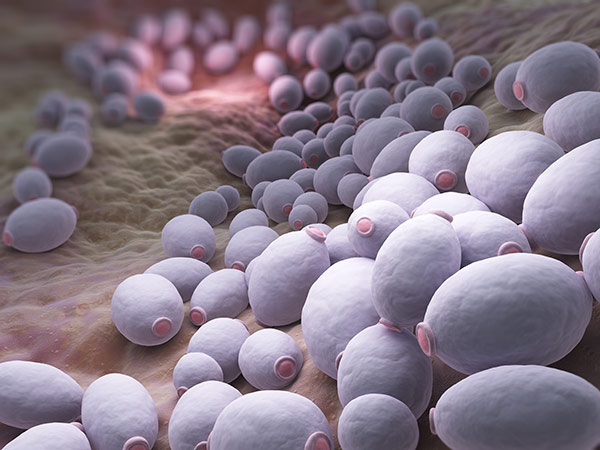 Candida syndrome with intestinal dysbiosis (a microbial imbalance in the gut) is not an uncommon health problem. It should be suspected in any MSIDS patient who has unexplained fatigue, joint and muscle pain, and neurological symptoms such as brain fog and headaches that are unresponsive or worsen with standard treatment regimens.
Candida syndrome with intestinal dysbiosis (a microbial imbalance in the gut) is not an uncommon health problem. It should be suspected in any MSIDS patient who has unexplained fatigue, joint and muscle pain, and neurological symptoms such as brain fog and headaches that are unresponsive or worsen with standard treatment regimens.
I first learned about candida many years ago after one of my patients had developed a strange set of skin rashes that worsened every time she took antibiotics. She also complained of chronic fatigue, headaches, blood sugar swings, trouble concentrating, and digestive problems. In searching for answers, I came across William Crook’s book, The Yeast Connection. In it he described my patient’s symptoms perfectly. By placing her on a yeast-free diet and treating the candida with antifungal agents, we were able to reverse all of her symptoms, which had baffled dermatologists and other subspecialists who had been unable to find a cause.
Although we normally have candida organisms present in our gastrointestinal tract in limited amounts, taking antibiotics for bacterial infections will encourage an overgrowth of candida.
Antibiotics kill off the good bacteria that keep our normal level of yeast in check. Furthermore, the standard American diet, which is high in sugar and refined carbohydrates, can promote an overgrowth of yeast. Other factors that may contribute to the candida syndrome are:
- Oral contraceptives
- Immune suppression due to stress
- Severe illness or chemotherapy
- Drugs that decrease the acidity of the gastrointestinal tract, such as antacids, H2 blockers (such as Zantac), and proton pump inhibitors (such as Prilosec).
Candida can be confused with antibiotic-resistant Lyme disease. Many patients with adrenal dysfunction and associated hypoglycemia also suffer from candidiasis. These symptoms overlap with those of persistent Lyme disease (except in Lyme there is migratory pain, where symptoms come and go). The most common signs and symptoms of candidiasis
include:
- Blood sugar swings with overlapping reactive hypoglycemia and a craving for sweets
- Depression
- Dizziness with poor motor coordination
- Fatigue
- Fungal infections of the nails
- Gas and bloating, which increase with sugar/carbohydrate consumption
- Headaches
- Itching and other skin problems
- Mood swings
- Muscle and joint pain that does not migrate throughout the body
- Poor digestion with nausea
- Poor memory and concentration (brain fog)
- Rashes
- Thrush in the mouth (yeast on the tongue and buccal mucosa, which appears as a white, patchy coating)
- Vaginitis (recurrent vaginal yeast infections)
If you have been tested with both an IgE and IgG food allergy panel and found to be allergic to a multiplicity of foods, suspect overlapping candida and leaky gut syndrome, especially if there is histamine release with associated itching, sneezing, wheezing, and/or nasal congestion after eating certain foods. Pay particular attention to your diet and the acid/alkaline balance of your foods, avoiding allergic foods by following a rotation diet. A comprehensive digestive stool analysis (CSDA) can also be performed through various labs such as Genova Diagnostics to check for bacterial and yeast overgrowth in the stool, while checking yeast sensitivities to antifungal agents.
Treating Candida and Yeast Infections
The most important dietary modifications for dealing with yeast are to eliminate malt, vinegar, simple sugars, and carbohydrates (including fruits early on in the treatment), as well as all yeast-containing foods (most breads and cheeses) and fermented foods (e.g., soy sauce, tempeh, pickles, sauerkraut, and alcoholic beverages such as wine, beer, and cider). Mushrooms should also be avoided (they are fungal, which is a form of yeast), as well as any foods to which you are either sensitive or allergic.
We prescribe nystatin prophylactically if patients need to be on longterm antibiotics, to avoid issues with yeast overgrowth, but often the tablet form of nystatin is insufficient in dealing with severe yeast problems once they have arisen. Powdered nystatin is more effective than tablets, and should be used in cases of severe candida.
Despite explaining the necessity of a strict, sugar-free, yeast-free diet to our patients taking antibiotics, they often have a difficult time adhering to this regimen.
Therefore, we sometimes use rotations of antifungal medications such as Diflucan and, rarely, Sporanox. These medications can be very effective, but potential side effects include inflammation of the liver and cardiac symptoms (EKG abnormalities) requiring proper monitoring. If these medications are ineffective or are contraindicated, natural antifungal agents, such as caprylic acid, grapefruit seed extract, garlic, berberine, and oregano oil can be helpful. We also frequently use monolaurin, a biofilm-busting coconut oil extract with antibacterial, antiviral, and antifungal effects, as well as Biocidin with broad spectrum botanicals for intestinal dysbiosis. When combined with good-quality, high-dose probiotics (lactobacillus and/or Bifidobacterium) they can be extremely beneficial in restoring the proper balance of intestinal bacteria and yeast in the colon. We use several strains of high-potency acidophilus and choose brands that are acid resistant and/or coated with sodium alginate to increase the amount of acidophilus that colonizes the small and large intestines.
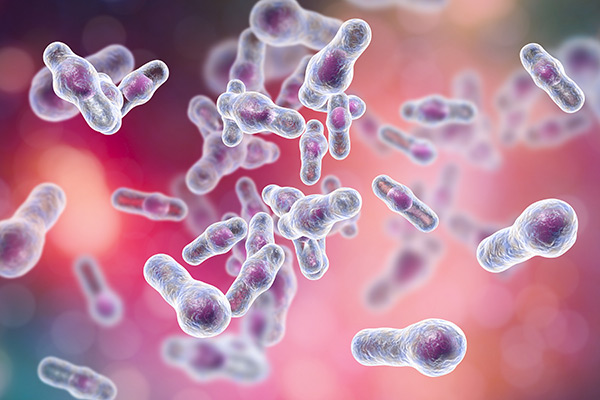 Not all forms of yeast are detrimental. Apart from prescribing high doses of good-quality probiotics, and occasionally prebiotics containing fructooligosaccharides (FOS) to prevent antibiotic-associated diarrhea, we also give patients Saccharomyces boulardii, a type of beneficial yeast that has been shown to decrease the incidence of Clostridium difficile diarrhea. Clostridium difficile is a bacteria responsible for 95 percent of pseudo-membranous colitis and 30 percent of all antibiotic-associated diarrheas. Saccharomyces is a healthy yeast that acts as a temporary barrier protecting the intestinal mucosa. A 2009 study published in Infection and Immunity showed that saccharomyces has a protease that inhibits the effects of Clostridium difficile toxins A and B. Clostridium difficile has the potential to be life threatening. It is therefore very important to protect against this possibility by using high-dose probiotics and Saccharomyces boulardii during antibiotic therapy.
Not all forms of yeast are detrimental. Apart from prescribing high doses of good-quality probiotics, and occasionally prebiotics containing fructooligosaccharides (FOS) to prevent antibiotic-associated diarrhea, we also give patients Saccharomyces boulardii, a type of beneficial yeast that has been shown to decrease the incidence of Clostridium difficile diarrhea. Clostridium difficile is a bacteria responsible for 95 percent of pseudo-membranous colitis and 30 percent of all antibiotic-associated diarrheas. Saccharomyces is a healthy yeast that acts as a temporary barrier protecting the intestinal mucosa. A 2009 study published in Infection and Immunity showed that saccharomyces has a protease that inhibits the effects of Clostridium difficile toxins A and B. Clostridium difficile has the potential to be life threatening. It is therefore very important to protect against this possibility by using high-dose probiotics and Saccharomyces boulardii during antibiotic therapy.




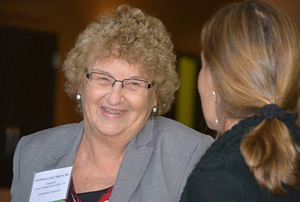








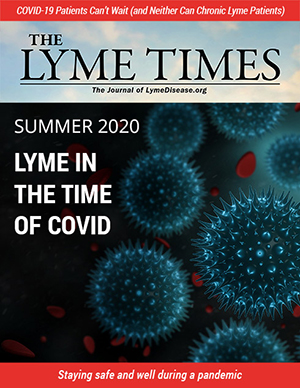









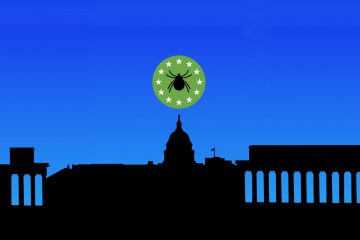





Do you have any kind of study for this LYME disease that is causing a concentration problem for me?
If you have concerns about tick-borne disease, we suggest you consult with a Lyme-literate practitioner. Here is a link to our physician directory: https://www.lymedisease.org/find-lyme-literate-doctors/